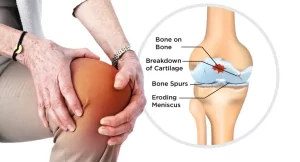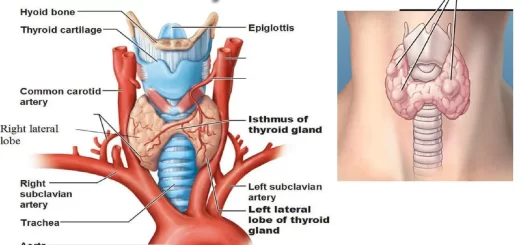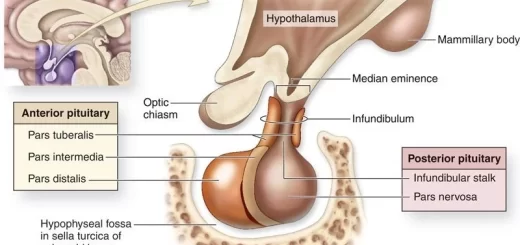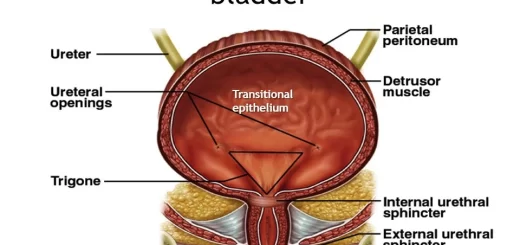Degenerative Joint Diseases (Osteoarthritis) symptoms, types, causes and treatment
Osteoarthritis is known as degenerative joint disease or “wear and tear” arthritis, It occurs most frequently in the hands, hips, and knees, It is the most common form of arthritis, It takes place when the protective cartilage that cushions the ends of the bones wears down over time.
Degenerative Joint Diseases
Osteoarthritis (OA) was previously thought to be a normal consequence of aging, leading to degenerative joint disease, However, it is now realized that osteoarthritis results from a complex interplay of multiple factors, including:
- Joint integrity.
- Genetic predisposition.
- Local inflammation (Due to Operation, Bacterial infection or Protheses).
- Mechanical forces (Obesity that affects hips, knees, and ankles).
- Cellular and biochemical processes.
Osteoarthritis (OA) is the leading cause of arthritis. Joint pain is a frequent symptom that often prompts a patient to seek medical attention (The leading cause).
Essentials of Diagnosis
Joint pain brought on and exacerbated by activity and relieved with rest, Stiffness that is self-limited upon awakening in the morning or when rising from a seated position after an extended period of inactivity (Relieved by moving for about 10 minutes), Absence of prominent constitutional symptoms (No systemic manifestations).
Examination
- Increased bony prominence (Osteophytes) at the joint margins
- Crepitus or a grating sensation upon joint manipulation.
- Tenderness over the joint line of the symptomatic joint.
- Joint swelling with evidence of inflammation in inflammatory OA.
Diagnosis and clinical features
X-ray
- Joint space narrowing.
- Subchondral sclerosis.
- Osteophyte formation.
- Subchondral cyst formation.
Blood tests
- Raised CRP (In some cases).
- Normal ESR.
- Rheumatoid factor (RF) and anti-nuclear antibody (ANA) are negative.
MRI
Early cartilage and subchondral bone changes, although it is not routinely used due to the cost.
Arthroscopy
Arthroscopy can reveal early fissuring and surface erosions.
Clinical criteria for the diagnosis of OA Of the Knee
The classic criteria for OA of the knee is based upon the presence of knee pain plus at least three of the following six clinical characteristics
- Greater than 50 years of age.
- Morning stiffness for less than 30 minutes.
- Crepitus on active motion of the knee.
- Bony tenderness.
- Bony enlargement.
- No palpable warmth.
Risk factors for osteoarthritis
- Increasing age (all sites).
- Female sex or gender (some sites, particularly knee and hand).
- Race or ethnicity (variable at different joint sites).
- Genetic predisposition (all sites).
- Obesity (most sites, but more marked for the knee than other joints).
- Trauma, and some occupations involving repetitive activities.
Treatment
The goal of medical therapy is to:
- Control pain
- Improve function.
- Minimize disability
- Enhance health-related quality of life (HQO)
The treatment options given to the individual vary and is designed specifically for that individual based on the stage and severity of osteoarthritis.
Nonpharmacological Therapy for Osteoarthritis
- Patient education.
- Social support.
- Exercise.
- Weight loss.
- Physical therapy.
- Assistive devices for ambulation.
- Appropriate footwear.
- Occupational therapy.
- Joint protection.
- Devices to help with activities of daily living.
Agents Used to Treat Osteoarthritis
- Acetaminophen.
- NSAIDs.
- Salicylates.
- Propionic acids: Ibuprofen, naproxen, oxaprozin, flurbiprofen, ketoprofen.
- Acetic acids: Diclofenac, tolmetin, etodolac, sulindac, indomethacin.
- Oxicams: Piroxicam.
- Cyclooxygenase inhibitors: Celecoxib.
- Opiates.
- Tramadol.
- Topical agents.
- Glucosamine/chondroitin and S-adenosylmethionine.
- Glucocorticoids (intra-articular).
- Hyaluronic acids: Sodium hyaluronate, hylan G-F 20.
Characteristic sites of involvement in the peripheral skeleton include the hand Distal interphalangeal joint and First carpometacarpal joint, knees, and hips.
The knee involvement only includes the Patello-femoral and Femoro-tibial joints. The tibio-fibular joint is not involved Outside the joint capsule). The most affected races (Ethnicity) are Spanish, Latin Americans, and Caucasians.
You can subscribe to Science Online on YouTube from this link: Science Online
You can download the Science Online application on Google Play from this link: Science Online Apps on Google Play
Systemic Lupus Erythematosus symptoms, diagnosis, types and treatment
Rheumatoid Arthritis (RA) causes, stages, symptoms, diagnosis, and specific joint affection
Rheumatoid Arthritis diagnosis and treatment, Disease-Modifying antirheumatic drugs (DMARDs)
Non-radiographic axial spondyloarthritis, Reactive arthritis, and Enteropathic arthritis




